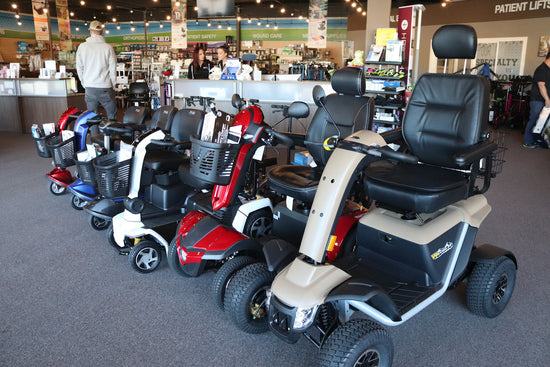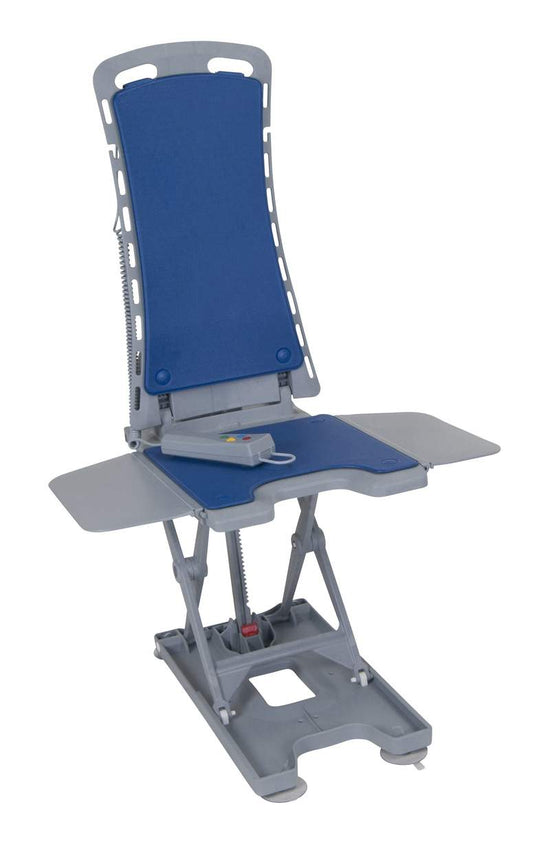Mobility aids have come a long way in recent decades, particularly when it comes to canes & crutches. For elderly people who rely on these tools for balance, stability, or recovery, understanding how modern innovations have improved comfort, safety, and usability is essential. Today’s canes & crutches are no longer one-size-fits-all.
They are available in a variety of materials, ergonomic shapes, and adjustable options designed to fit the unique needs of older adults. Whether you’re considering a new mobility aid for yourself or helping a loved one choose one, staying informed about the latest designs and features can make a world of difference in day-to-day life. In this blog, we’ll explore how canes & crutches have evolved and what today’s options offer in terms of convenience, performance, and peace of mind.
Historical Background of Canes & Crutches
The journey of canes & crutches dates back thousands of years, evolving from rudimentary sticks to highly specialized mobility aids. Ancient civilizations used simple wooden staffs for balance and support. These early versions were often symbolic as well, representing wisdom or authority. Over time, their function shifted more toward practical use, particularly for the injured or elderly.
During the Middle Ages, canes were often handcrafted and ornate, but still lacked ergonomic design. Crutches, on the other hand, began appearing in more structured forms to assist individuals recovering from injuries or illnesses. It wasn't until the 20th century that significant innovations emerged—lightweight metals, rubber tips, and height adjustability became more common.
Modern canes & crutches reflect both functional necessity and personal comfort. The rise of medical research and aging populations has fueled demand for better design, leading to aids that not only support mobility but also reduce the risk of strain or falls. Today’s products are shaped by decades of refinement, blending tradition with technology to meet the needs of older adults more effectively than ever before.
Ergonomic and Adjustable Designs for Enhanced Comfort
Comfort is a top priority for elderly people using mobility aids daily. Ergonomic and adjustable designs in modern canes & crutches have significantly improved how these tools interact with the human body. Ergonomics focuses on reducing physical strain, which is particularly important for seniors who may have arthritis, joint pain, or reduced muscle strength.
Many canes now feature contoured handles that fit naturally in the palm, minimizing pressure on the wrist. Some crutches are designed with padded underarm rests and forearm cuffs to prevent chafing and fatigue. The shape and angle of grips have been optimized for better weight distribution, which lessens the risk of injury during use.
Height adjustability is another major development. With telescoping shafts and simple push-button mechanisms, users can tailor the height to their comfort level. This not only promotes proper posture but also enhances walking efficiency. Lightweight materials such as aluminum and carbon fiber are commonly used, making it easier to maneuver the device without excessive effort.
Overall, these design improvements ensure that elderly individuals can maintain mobility with reduced discomfort and increased independence.
High-Tech Features in Today’s Mobility Aids
Technology has played a pivotal role in the modernization of canes & crutches, making them smarter and more user-friendly. One of the most notable innovations is the integration of smart sensors. These sensors can detect movement patterns and provide feedback to the user, helping them walk more safely and efficiently. Some smart canes even alert family members if a fall occurs.
LED lights are another valuable addition, improving visibility in dim environments and reducing the likelihood of accidents. Built-in GPS can assist with navigation and location tracking—useful features for elderly individuals who enjoy walking outdoors or for caregivers keeping track of their loved ones.
Another advancement is shock-absorbing technology. Both canes and crutches now come with built-in springs or rubberized tips that cushion the impact on joints. Bluetooth connectivity is being explored for health monitoring, enabling integration with smartphones and apps that track physical activity or balance issues.
These features demonstrate how far canes & crutches have evolved from basic support tools to intelligent devices that actively enhance the quality of life for older users.
Safety Enhancements and Stability Features
Safety is paramount when it comes to selecting canes & crutches for elderly people. Modern aids now include several stability-enhancing features designed to minimize risks:
-
Non-slip rubber tips: Provide traction on various surfaces to prevent slipping.
-
Quad bases and wide foot designs: Offer greater balance support compared to single-point canes.
-
Shock-absorbing shafts: Reduce strain on wrists and arms during use.
-
Wrist straps or forearm cuffs: Prevent the device from dropping if grip is lost.
-
Reflective materials or lights: Improve visibility during nighttime or low-light conditions.
-
Foldable locking mechanisms: Ensure the aid remains stable and sturdy during use while offering portability.
These enhancements make modern canes & crutches far more secure, especially for seniors who may have balance concerns or are navigating uneven terrain.
Tips for Choosing the Right Cane or Crutch
Selecting the right mobility aid can be a life-changing decision for an elderly individual. Here are key considerations to keep in mind:
-
Assess mobility needs: Determine whether a cane or crutch is more appropriate based on balance, strength, and injury history.
-
Check for proper height: A well-fitted aid should allow a slight bend in the elbow when the hand is on the grip.
-
Look for ergonomic handles: Choose grips that are comfortable and suited to your hand shape and pressure points.
-
Consider portability: Foldable and lightweight options are easier to travel with and store.
-
Evaluate material durability: Aluminum and carbon fiber are strong yet light, ideal for everyday use.
-
Test stability features: Make sure the base offers the right level of balance for your walking style and environment.
By carefully evaluating these factors, older users can ensure that their canes & crutches support not just mobility, but safety and comfort too.
Maintenance and Care for Longevity
Proper maintenance is essential to ensure the long-term effectiveness of canes & crutches. Elderly people often depend on these tools daily, making wear and tear inevitable. Regular inspection can help identify early signs of damage or instability before they become hazardous.
Rubber tips should be checked monthly for wear, as a worn tip can reduce grip and lead to slipping. Replacements are inexpensive and easy to install. If the cane or crutch is adjustable, make sure the locking mechanisms are secure and functioning correctly. Any wobbling or loose joints should be addressed immediately.
Cleaning is also important. Dirt or moisture can accumulate and affect traction or cause corrosion, especially in metal components. Use a damp cloth for regular cleaning and store the device in a dry, cool place when not in use.
Padded handles or underarm supports may need replacement after prolonged use. These parts can become compressed or unsanitary over time. Keeping the device in top condition not only extends its life but ensures consistent performance and safety for the elder user.
The evolution of canes & crutches has brought remarkable improvements in comfort, safety, and functionality for elderly people. From historic wooden supports to today’s ergonomic, tech-enhanced designs, modern mobility aids are designed to support not only your body but also your independence and lifestyle. Whether you’re in need of a simple walking cane or a specialized crutch system, choosing the right aid can transform your daily experience and keep you confidently mobile.
For a wide selection of modern mobility aids and expert guidance, visit Everything Medical—your trusted source for Home Medical Equipment and Supplies in Redding, California. Let their knowledgeable team help you find the perfect cane or crutch tailored to your needs.




